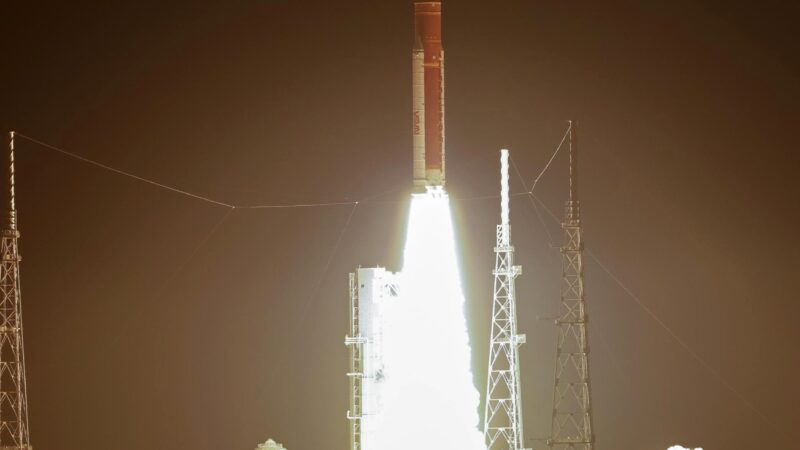Clearest, furthest: James Webb Space Telescope’s first full-color image released

The James Webb Space Telescope ( JWST, hereinafter referred to as Webb ) is a space telescope designed primarily to conduct infrared astronomy. As the largest optical telescope in space, its greatly improved infrared resolution and sensitivity allows it to view objects too old, distant, or faint for the Hubble Space Telescope. This is expected to enable a broad range of investigations across the fields of astronomy and cosmology, such as observation of the first stars and the formation of the first galaxies, and detailed atmospheric characterization of potentially habitable exoplanets.

James Webb Space Telescope
“Today, we present humanity with a groundbreaking new view of the cosmos from the James Webb Space Telescope – a view the world has never seen before,” said NASA Administrator Bill Nelson. “These images, including the deepest infrared view of our Universe that has ever been taken, show us how Webb will help to uncover the answers to questions we don’t even yet know to ask; questions that will help us better understand our universe and humanity’s place within it.
“The Webb team’s incredible success is a reflection of what NASA does best. We take dreams and turn them into reality for the benefit of humanity. I can’t wait to see the discoveries that we uncover – the team is just getting started!”
“These first images and spectra from Webb are a huge celebration of the international collaboration that made this ambitious mission possible,” says Josef Aschbacher, ESA Director General. “I want to thank everyone involved with commissioning of this magnificent telescope and the delivery of these first incredible products from Webb for making this historic day a reality.”
Observations
Webb’s first observations were selected by a group of representatives from NASA, ESA, CSA, and the Space Telescope Science Institute.
SMACS 0723

SMACS 0723
Webb has delivered the deepest and sharpest infrared image of the distant Universe so far – and in only 12.5 hours. This new image, a colour composite of multiple exposures each about two hours long, is approximately the size of a grain of sand held at arm’s length. This deep field uses a lensing galaxy cluster to find some of the most distant galaxies ever detected. This image only scratches the surface of Webb’s capabilities in studying deep fields and tracing galaxies back to the beginning of cosmic time. Read more about this image[1].
WASP-96b

WASP-96b
Webb’s detailed observation of this hot, puffy planet outside our Solar System reveals the clear signature of water, along with evidence of haze and clouds that previous studies of this planet did not detect. With Webb’s first detection of water in the atmosphere of an exoplanet, it will now set out to study hundreds of other systems to understand what other planetary atmospheres are made of. Read more about this image[2].
Southern Ring

Southern Ring
This planetary nebula, an expanding cloud of gas that surrounds a dying star, is approximately 2,000 light years away. Here, Webb’s powerful infrared eyes bring a second dying star into full view for the first time. From birth to death as a planetary nebula, Webb can explore the expelling shells of dust and gas of aging stars that may one day become a new star or planet. Read more about this image[3].
Stephan’s Quintet

Stephan’s Quintet
Stars derive from, and contribute to, gas and dust in mass quantities, swirling around galaxies. The dust evolves over time and Webb can study nearby and dynamic interacting galaxies to see the dust in action. Now, scientists can get a rare look, in unprecedented detail, at how interacting galaxies are triggering star formation in each other and how the gas in these galaxies is being disturbed. Read more about this image[4].
Carina Nebula

Carina Nebula
Webb’s look at the ‘Cosmic Cliffs’ in the Carina Nebula unveils the earliest, rapid phases of star formation that were previously hidden. Looking at this star-forming region in the southern constellation Carina, as well as others like it, Webb can see newly forming stars and study the gas and dust that made them. Read more about this image[5].
Outlook
The release of Webb’s first images and spectra kicks off the beginning of Webb’s science operations[6], where astronomers around the world will have their chance to observe anything from objects within our Solar System to the early Universe using Webb’s four instruments.
References:
[1]ESA – First images from Webb telescope reveal unseen Universe
[2]ESA – Webb reveals steamy atmosphere of distant planet in exquisite detail
[3]ESA – Webb captures dying star’s final ‘performance’ in fine detail
[4]ESA – Webb sheds light on galaxy evolution, black holes
[5]ESA – Webb reveals “Cosmic Cliffs” – a glittering landscape of star birth











New milestone! By the way, this Carina Nebula smells like a pillar of creation, so pretty!
pretty good article structure and pictures introduction